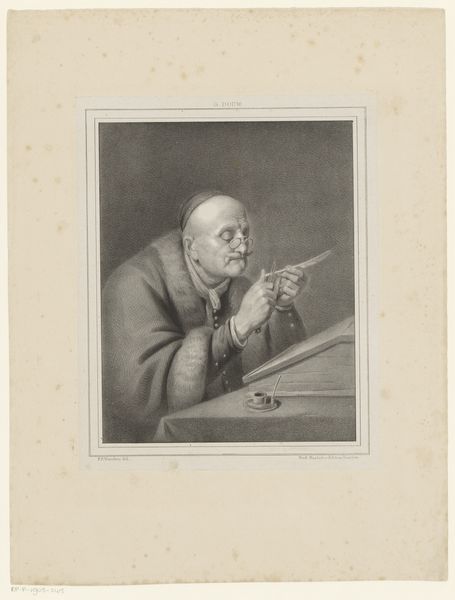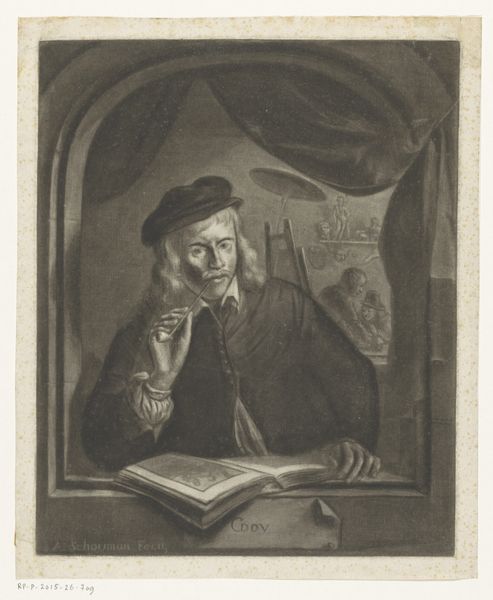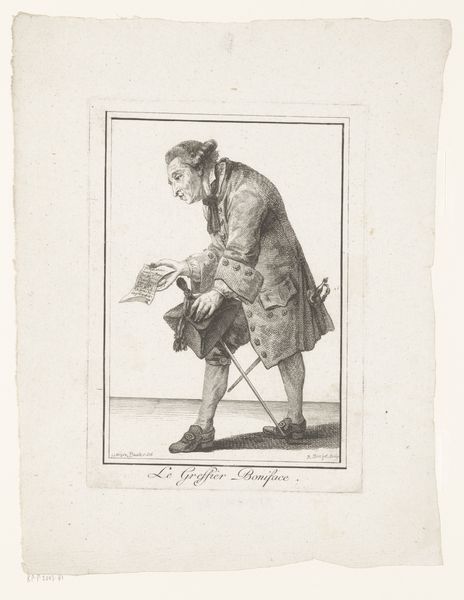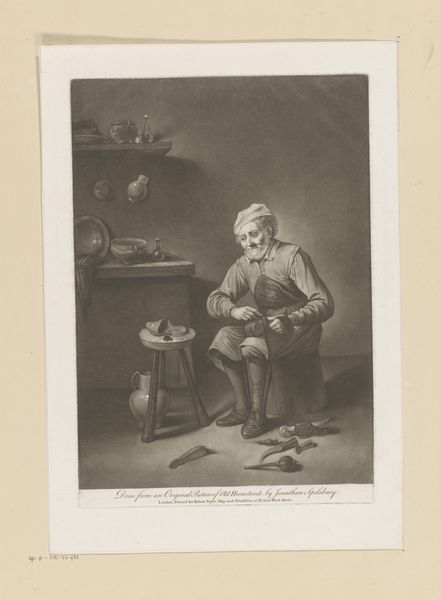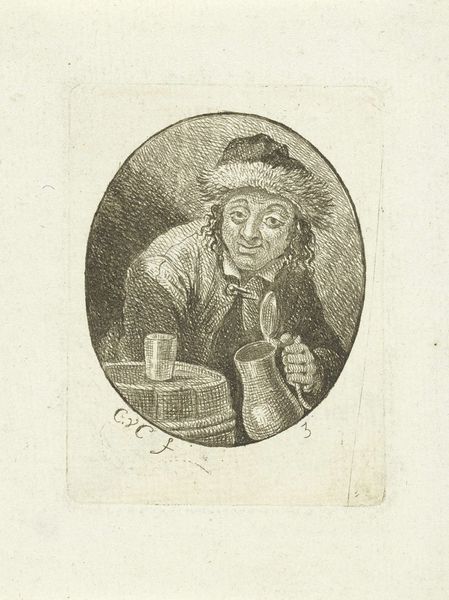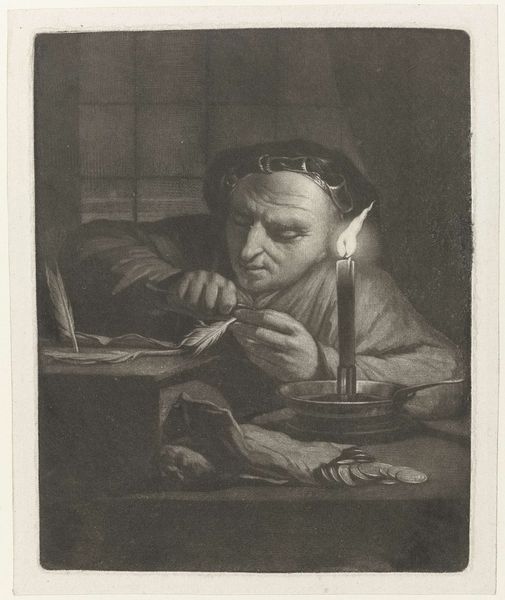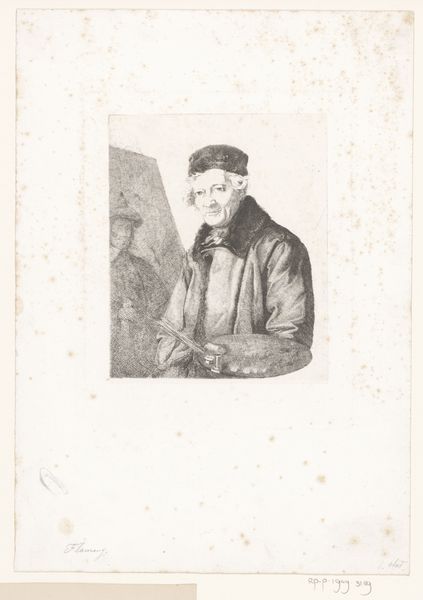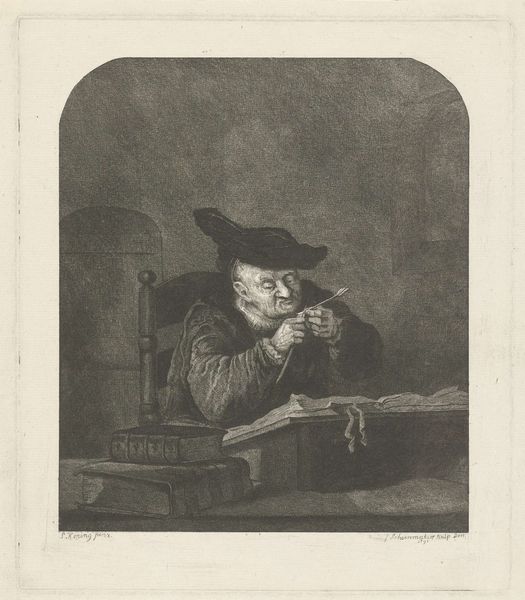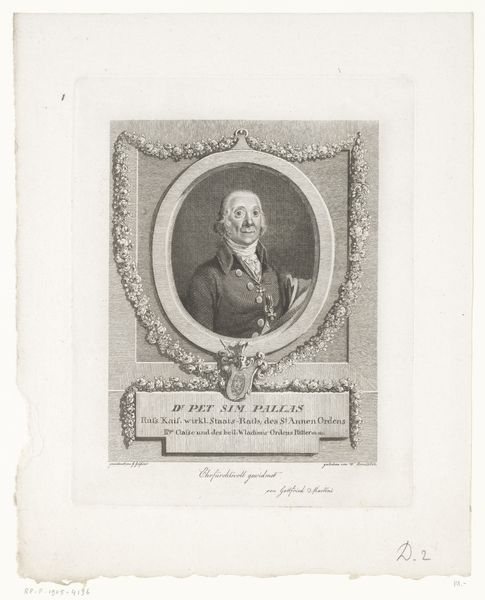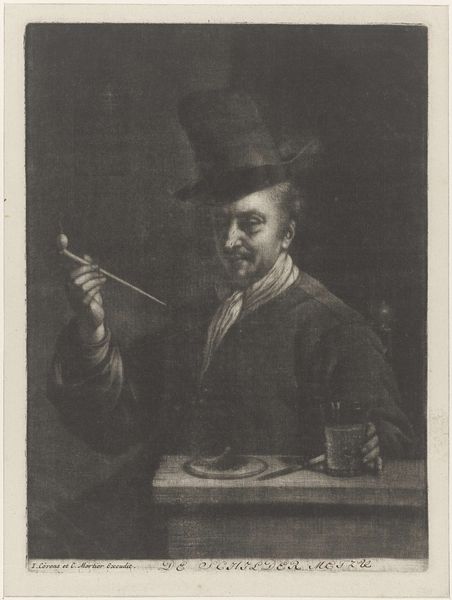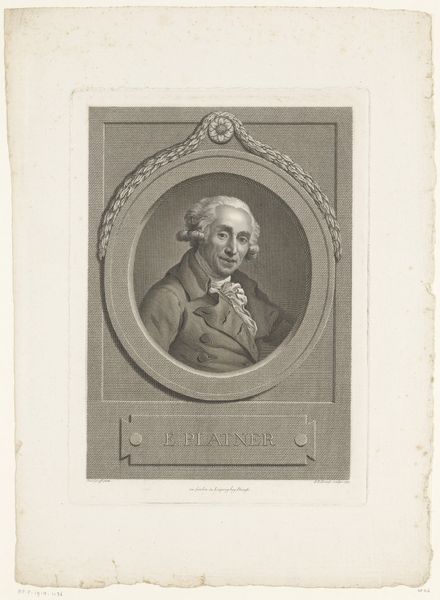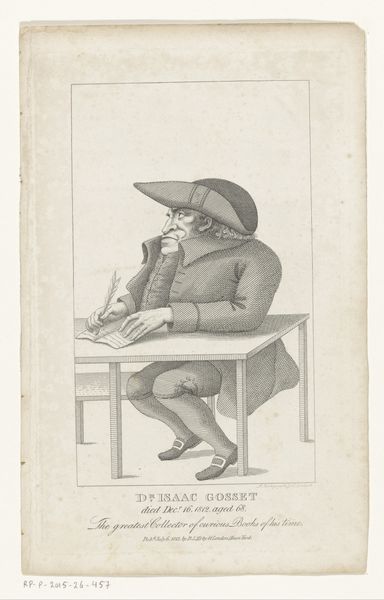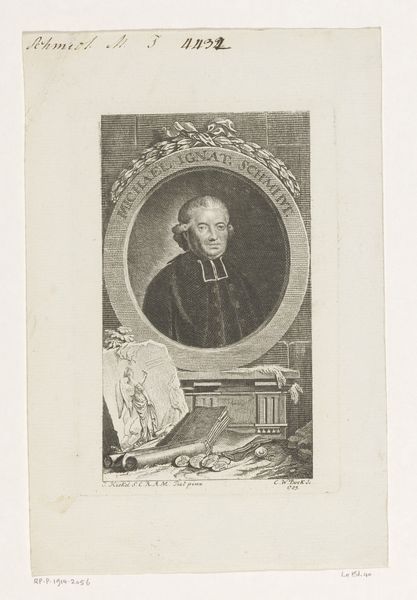
#
wedding photograph
#
photo restoration
#
photo element
#
charcoal drawing
#
charcoal art
#
historical photography
#
old-timey
#
framed image
#
19th century
#
photographic element
Dimensions: height 354 mm, width 252 mm
Copyright: Rijks Museum: Open Domain
Curator: This image, likely crafted between 1745 and 1786, depicts a man taking a bag of money from a table. Its title is "Man pakt een zak geld van een tafel." What catches your eye first? Editor: Well, the theatrical lighting is quite effective. It creates a sense of drama and intrigue, like a stage set. The way it highlights the man's face and hands really draws attention to the act itself. There’s an emotional weight, I find. Curator: Absolutely! The light emphasizes his wary expression and almost frantic grasping for the loot. You almost wonder if this is desperation or pure greed driving him, right? I mean, he looks like he's about to bolt. The barred window behind him definitely suggests confinement, but perhaps metaphorically too? He's imprisoned by his own actions? Editor: Perhaps. However, one must also observe how the formal structure uses the circular window to echo the scattered coins. The bars then create this tension between the geometric form and the chaotic arrangement, signifying both order and disorder, a very common method to express that someone is "not at ease". The stark contrast between the textures—the rough coins, the smooth table, and the softer fabrics of his clothing, it creates this almost tactile experience, it adds layers of meaning through purely visual language. Curator: I like how you've analyzed the formal components, but I can't help feeling sorry for this bloke. Imagine living with that anxiety and fear every single day? Wondering if your ill-gotten gains will buy you security, or only attract more trouble. I mean, I wonder what James Wilson, our artist, thought when making this? Editor: Wilson certainly provides us a masterful composition, regardless of what one thinks of the man’s circumstances. I think what Wilson is suggesting is more a philosophical statement on the corruptibility of mankind. This is a very Baroque conception, by the way. Curator: So, in essence, whether a morality tale or an exploration of formal constructs, it serves as a compelling visual experience? I'm off to get some fresh air; analyzing greed and architectural metaphors is making me claustrophobic. Editor: Agreed, it’s quite dense with potential meanings. On to the next piece, perhaps something a little more lighthearted?
Comments
No comments
Be the first to comment and join the conversation on the ultimate creative platform.
